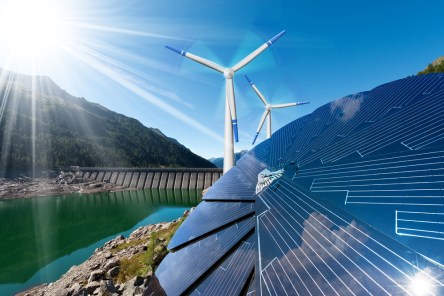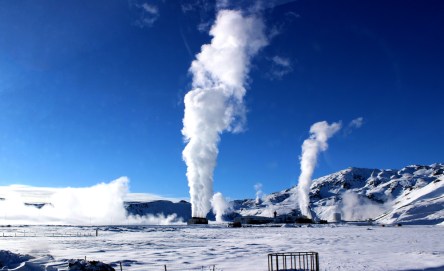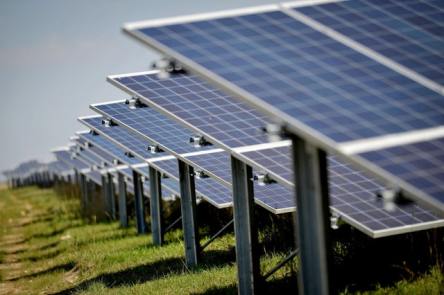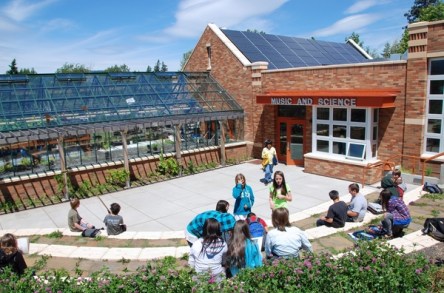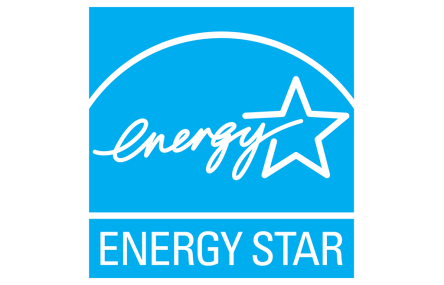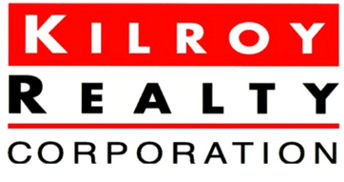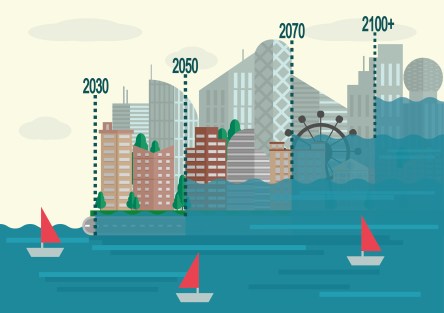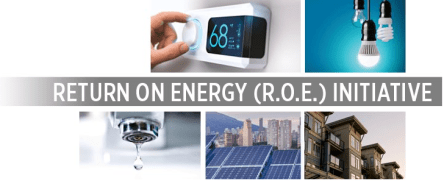This is the last year that businesses are eligible for the 30 percent federal investment tax credit (ITC) for solar—sort of. A few simple steps can position businesses take advantage of the solar ITC before step downs begin next year. The Tax Benefit Step Down Tax benefits have motivated sustainable upgrades over the past ten years. The 30 percent ITC was the most popular. The ITC “provides owners of solar systems with the ability to offset tax payments owed to the IRS in an amount equal to 30 percent of the eligible cost basis of a solar photovoltaic system,” summarizes Smart Energy Decisions. Beginning in 2020, however, the tax benefit will gradually decrease. The first step decline is to 26 percent for projects that “begin construction” in 2020. In 2021, the benefit declines to 22 percent. All projects starting in or after 2022 receive only 10 percent. “The good news is that there is currently a 30 percent ITC for the cost of the system for those installing solar before December 31st, 2019,” emphasized Ray Segars, CEM, consultant for energy and sustainability on Yardi’s energy team. He added, “The emphasis is on credit. This is a credit not a tax deduction. Tax deductions reduce taxable income, thus reducing associated taxes. Tax credits are more valuable because they reduce the actual tax bill dollar for dollar.” Gaining the Advantage on the Solar ITC Notice 2018-59 details strategies to help corporations navigate the step downs with financial finesse. Firstly, “beginning construction” is a surprisingly loose term. There are two ways that a project may begin and still qualify for the year’s tax benefit. The Physical Work Test entails beginning physical work on your solar project The Five Percent Test entails paying or incurring 5 percent or...
Global Partnership
Yardi + GRESB
Yardi has long supported the mission of Global Real Estate Sustainability Benchmark (GRESB), an Amsterdam-based limited private company, to improve real estate sustainability performance with environmental, social and governance benchmarking. The property management technology provider recently elevated its commitment by becoming one of just nine sustainability consultants and solution providers in GRESB’s Global Partner program. In this role, Yardi helps GRESB participants complete sustainability assessments, manage ESG data and advance ESG performance. The company will also collaborate with the organization’s industry, media and research partners to share sustainability best practices across the property management industry. GRESB works with the industry to define the global standard for sustainability performance in real assets, providing standardized and validated ESG data to the capital markets. More than 80 institutional investors, collectively representing more than $18 trillion in institutional capital, use GRESB data and analytical tools. In 2018 GRESB assessed 903 real estate funds and property companies, 75 infrastructure funds, 280 infrastructure assets and 25 debt portfolios. “GRESB members can use Yardi’s energy solutions to drive actionable environmental, financial and operational insights into their real estate portfolios and engage more closely with the investor community. These capabilities benefit our clients around the world, and we are pleased to extend them to an even broader community of real estate portfolio managers,” said Akshai Rao, vice president of energy and procurement for Yardi. A GRESB evaluation measures sustainability performance indicators including energy consumption, greenhouse gas emissions, water consumption and waste. A multi-layer validation process produces high-quality data that investors and participants can use in their investment and decision-making processes. “Real estate companies that establish and track a full range of ESG metrics achieve multiple tangible business outcomes for shareholders,” GRESB says on its website. In one recent project, S&P Dow Jones...
Enlightened
Get Smart with Energy Facts
Enjoy some nuggets of energy intelligence courtesy of FactRetriever.com, Danish critical global challenges tracker The World Counts, the U.S. Energy Information Administration, and energy and home services provider British Gas. Humans began using energy sources other than fire about 5,000 years ago. In 1807 English scientist Thomas Young became the first person to use the word “energy” in the modern sense. The U.S.’s first natural gas well was dug in Fredonia, N.Y., in 1821. The first oil well followed in Pennsylvania in 1859. Thomas Edison built the first commercial central power plant. The Pearl Street Power Station in New York City sent electricity to more than 80 buildings in 1882. It served more than 500 customers within two years. Seventeen percent of U.S. electricity generated in 2017 came from renewable energy sources such as solar, wind and geothermal power. Biomass and waste fuels accounted for about 1.6% of U.S. electricity in 2017. The U.S. produces the most nuclear-generated electricity, nearly one-third of the world’s total. The second-largest producer is France, which generates more than three-fourths of its electricity in nuclear reactors. Lighting accounts for about 20% of U.S. electricity consumption. Only about 10% of the energy in a fluorescent light bulb creates light. The rest creates heat. Mexico’s Programa Luz Sustentable delivered four energy-efficient light bulbs to almost 6 million households in 2012. American inventor Charles Fritts built a prototype of the first solar cell in 1880. Enough sunlight reaches the Earth’s surface every minute to satisfy the world’s energy demands for a year. The global solar market grew by about 29% in 2017. The cost of solar power has dropped by approximately 60% since 2009. Buildings account for 36% of overall annual energy consumption in the U.S. and 65% of the electricity demand....
Energy Boom
Insight from Yardi's Christy Cannon
Christy Cannon, a Yardi Energy account executive and holder of the Certified Energy Manager designation from the Association of Energy Engineers, discusses how integrated systems are streamlining building operations. The exchange below includes excerpts from an interview published in Commercial Property Executive. Q: How do building managers perceive the network of physical objects that can sense, communicate and interact with the external environment, otherwise known as the Internet of Things (IoT)? A: The principal appeal is the opportunity to reduce operating costs, increase NOI and ultimately increase property value for the building owner. Our retail clients also face pressure to provide space that helps their tenants cultivate an image of environmental stewardship. I see people who do the heavy lifting every day being excited about IoT. It’s like giving them a superhero cape. IoT devices help facility managers perform predictive maintenance and optimize heating, ventilation and air conditioning (HVAC), which not only reduces the number of comfort calls they have to deal with but also lowers repair and maintenance costs and extends the life of expensive equipment. Energy managers can view utility consumption in real time. They can manage peak electric demand and save 20% or more off their unregulated utility bills, or immediately identify a water leak. Q: What’s the relationship between the IoT and artificial intelligence (AI)? A: The IoT architecture looks something like a wheel with hundreds or thousands of spokes, with each spoke representing an IoT device. Multiple network structures enable IoT devices to get their data to software that can use it. AI takes all the big data buildings collect from IoT devices, building automation systems and submeters, and learns how to predict future outcomes or make decisions based on the best available options. Consider all the factors that contribute to a building’s...
Energy Snapshot
What's in store for 2019?
The Balance Sheet compiled prognostications on some key energy issues: Coal stays stable. After a two-year decline, global demand picked up in 2017 and 2018. China accounts for about half of the world’s consumption, and growing demand in India and Asian countries is offsetting declines in the U.S. and Western Europe. The U.S. Energy Information Administration (EIA) forecasts that the country’s electricity generation share from coal will average 26% in 2019, down from 30% in 2017. Oil retreats. The International Energy Agency and OPEC cut their forecasts for global oil demand growth in 2019, reflecting lower economic growth assumptions. The last time world oil consumption fell was in 2008-09, driven by surging prices and the recession. U.S.’s natural gas role grows. New liquefied natural gas (LNG) plants in Louisiana, Texas and Georgia are scheduled to come online, doubling U.S. LNG exporting capability. China is a key driver of demand as the world’s largest gas importer. EIA expects the share of U.S. total utility-scale electricity generation from natural gas-fired power plants to be 35% in 2019, up from 32% in 2017. Politics play out. Climate politics will ramp up in the U.S. as the 2020 presidential election campaign gears up. In December 2018, leaders in the House of Representatives announced plans to establish a new panel, the Select Committee on the Climate Crisis. ‘Smart’ gets bigger. Investors and building managers will continue making green practices a core part of their business. “’Smart’ buildings are becoming more common because of new technology, which impacts building operations, and provides both efficiencies and connectivity which is increasingly being sought by tenants,” says the Counselors of Real Estate, an international property professionals organization. The Urban Land Institute, a nonprofit research and education group, adds, “Real estate has been proactive...
Not just hot air
Geothermal's potential
Look up and there’s the sun, whose rays can be captured and converted into electricity. Peer down and see fossil fuels, the engine for much of the world’s economy. You need to burrow even further to find another key source of energy, one that’s driven by the molten essence of the Earth. Geothermal energy originates from the heat at the planet’s center. It can be captured as a source of electricity to heat and cool buildings with geothermal heat pumps, which transfer heat to buildings by pumping water or a special fluid through pipes just below the Earth’s surface. Geothermal energy can also generate electricity through geothermal power plants using wells drilled 1 to 2 miles deep into the Earth to pump steam or hot water to the surface. Tapping the Earth’s internal heat dates back thousands of years, with Roman, Chinese and Native American cultures using hot mineral springs for bathing, cooking and eating. The first geothermal plant, built in Italy in 1904, used steam to turn a turbine that powered five light bulbs. Today, more than 20 countries generate geothermal energy, according to National Geographic. Iceland and the Philippines meet nearly one-third of their electricity demand with geothermal energy, while18 power plants at the Geysers Geothermal Complex north of San Francisco comprise the world’s largest geothermal installation. The U.S., the global leader for installed geothermal capacity, provides more than 3.7 gigawatts to the national grid, according to the U.S Department of Energy. Although geothermal offers an environmentally friendly, renewable, reliable and stable energy source with the smallest land footprint of any major power source, it does have its drawbacks. These include the risk of releasing greenhouse gases that tend to congregate near geothermal power plants, power plants’ effect on fragile land stability, high...
Sustainable Slopes
Report on Resorts' Energy Efficiency
While offering mountains of fun in a winter wonderland, ski resorts also take sustainability seriously. Almost 200 resorts, more than 75% of the U.S. total, have endorsed “Sustainable Slopes,” the National Ski Areas Assn.’s (NSAA’s) Environmental Charter that incorporates principles for ski area planning, operations and outreach. As climate change concerns and consumers’ environmental awareness grow, NSAA and other ski resort stakeholders are devising strategies to “help ski resorts transfer the concept of sustainability from one involving a few disparate energy and efficiency projects to a comprehensive a holistic way of doing business, and one that will seriously enhance the long-term prospects of the areas that adopt them,” as described by the ski magazine Powder. The latest annual report from NSAA, a trade association for alpine resorts, summarizes progress in water conservation, energy efficiency, renewable energy, waste reduction and recycling made by more than 300 ski areas that responded to a survey. One destination highlighted in the NSAA annual report, Boreal Mountain Resort & Soda Springs in California, has pledged to reduce its 2011 emissions levels by 25% by 2020. Resort managers retired less efficient vehicles, retrofitted night lighting infrastructure and installed solar panels that will generate 325,000 KwH annually. Another resort, Montana’s Bridger Bowl, offers free electric bus service on weekends as an alternative to single-occupant vehicles. And Copper Mountain Ski Resort in Frisco, Colo., installed electric vehicle charging stations, commingled recycling, composting and scrap steel recycling, and completed a building lighting retrofit. Opportunities for sustainability extend to a ski resort’s sine qua non: snow. An NSAA fact sheet notes that while snowmaking isn’t considered a consumptive act—most of the water diverted from streams for snowmaking returns to the watershed—opportunities abound to execute the process more efficiently: employing efficient snow-guns to increase the...
Charged Up
ELECTRIC VEHICLES + ENERGY STAR
ENERGY STAR® certifications have gone mobile. Originally geared toward properties and consumer products, the U.S. Department of Energy’s (DOE’s) efficiency program now includes a scoring system for electric vehicle (EV) charging stations. In December 2016, the U.S. Environmental Protection Agency (EPA) finalized its inaugural ENERGY STAR specification for electric vehicle chargers. An ENERGY STAR-certified charging station is defined as using 40% less energy than an uncertified one. As EV technology increases its foothold in the marketplace, its capabilities and ENERGY STAR endorsement offer substantial cost, convenience and sustainability benefits. Moving toward EV-compatibility EV sales are expected to top 1 million by 2020, up from about 200,000 in 2017. Some observers predict EVs will be the dominant mode of propulsion for cars by 2030, making charging an increasingly significant value consideration for multifamily and commercial property owners. Driving EVs and using ENERGY STAR-certified chargers can produce: Savings—EVs cost about half as much to drive per mile than standard gasoline-powered vehicles, according to this calculator. Property owners hosting charging stations for tenants and customers can control costs by anticipating the need for new EV equipment, upgrading electrical service to accommodate it, taking operations and maintenance costs into account, and researching incentives that make installations easier and less expensive Efficiency—EVs convert about 59–62% of the electrical energy from the grid to power at the wheels, whereas conventional gasoline vehicles convert about 17%–21% of the energy stored in gasoline to power at the wheels Convenience—Most EV charging happens at home or work, giving property managers who offer this capability a competitive advantage. But what if those places aren’t available? Locate the nearest public charger location in the U.S. here Smart technology—Some ENERGY STAR-certified EV charger models use Wi-Fi technology for remote power monitoring and control of the charging state...
CA Benchmarking
Yardi Smart Energy Suite is Ready
A California energy benchmarking law going into effect next June requires multifamily property owners to complete a potentially daunting array of information gathering and reporting requirements. Yardi’s energy management software and experts stand ready to make the process easy and painless. Under the mandate, known as AB 802, owners of multifamily buildings with more than 17 units, or gross floor area of 50,000 square feet, must report information on energy use from all energy meters using ENERGY STAR® Portfolio Manager®. Reports to the California Energy Commission for 2018 are due to the California Energy Commission on June 1, 2019, and annually thereafter. Similar requirements for commercial buildings went to effect in June 2018. Actions the commission recommends to meet the June 1 deadline begin by Feb. 1, 2019. Each building’s energy efficiency will be disclosed on a yet-to-be-established state website. “Publicly disclosing the performance of buildings will allow building owners and tenants to make better informed purchasing and leasing decisions, and the general public to better understand the buildings in which they live and work,” according to the California Energy Commission. Yardi is an ENERGY STAR Partner and is helping California users of the Yardi Smart Energy Suite get ready for AB 802. All owners of more than 330 California properties that rely on Yardi for ENERGY STAR benchmarking have retained the company in preparing for AB 802. Yardi Utility Expense Management, an element of the Yardi Pulse Suite, centralizes utility cost and consumption data and sends it directly into ENERGY STAR Portfolio Manager. Portfolio Manager is an online tool for tracking energy and water consumption and greenhouse gas emissions. It also allows comparisons of a building’s energy performance against similar-type buildings. Elements of AB 802 compliance include setting up multiple measurement criteria for...
Let’s Save the World...
Energy Reimagined Before 2050
The recently released UN Intergovernmental Panel on Climate Change report shocked everyone who was paying attention. In short, attempting to mitigate temperature rises to 1.5 percent by 2050 (which already seemed impossible to most) is too little too late. The globe is on a trajectory to see temperatures rise more than 3 percent by that time. The resulting flooding, droughts and superstorms will be catastrophic. A drastic shift in energy sourcing and usage is necessary to limit economic and humanitarian costs. Fortunately, drastic doesn’t mean impossible. Microgrids and carbon dioxide recycling are two available solutions that can make substantial impact. Microgrids Microgrids enable centralized power generation, storage and delivery. They offer more efficient power transmission, reduce costs for consumers, and decrease the duration of blackouts which can save lives and protect economies. A microgrid can “cut air pollution from the electric utility sector as much as 30 percent by 2030, saving 34,000 deaths a year,” states Smart Energy Consumer Collaborative. The systems offer more immediate benefits as well. Hurricanes Florence and Michael, for example, resulted in nearly $100 billion in property damages. After factoring in electricity outages and stalled commerce, Accenture estimates that such storms can cost economies $150 billion per year. The implementation of microgrids would reduce the economic impact of natural disasters by quickly restoring power. Microgrids also facilitate the integration of renewable energy sources with flexible scalability. Local organizations do not need to wait on utility companies or governments to implement more sustainable practices. Solar panels, roof-mounted wind turbines, and other sustainable energy devices can be used as the primary energy source on individual projects. Several power companies are exploring the power, efficiency and reliability of microgrids. Edison International, Central Hudson Gas & Electric, Duke Energy, San Diego Gas & Electric are just...
Powered by Bacteria
Photovoltaic innovation
The energy industry is reinventing itself in combined efforts to limit as much as possible the effects of climate change. Evermore photovoltaic farms emerge around the world, evermore wind projects spring up onshore, offshore near shore, and even air borne—the industry is still in perfecting mode, new ideas turning into new ways to harvest green energy. There’s one more breakthrough in the solar energy world, coming from the scientists at the University of British Columbia. The Canadian researchers managed to develop a bacteria-powered solar cell that can convert light to energy, regardless of the weather, working as efficiently in dim and bright light, which could be a step forward in places like British Columbia and parts of northern Europe where overcast skies are common. Called biogenic cells, these solar cells made of living organism, are intriguing. This new cell generated a current stronger than any previously recorded from such a device. This is the first time when researchers connected nine biological-solar (bio-solar) cells into a bio-solar panel, in an attempt to replicate photosynthesis—the natural way to convert light energy into chemical energy that is later released to fuel the organism’s activities. Previous endeavors were centered around extracting light-sensitive dye from genetically modified bacteria, but the process proved to be quite costly, complex and also not quite safe as during the extraction process, the dye was often damaged by the solvents used. The Canadian team tried something different—they used E.coli genetically engineered to produce ample amounts of lycopene—the molecule that gives tomatoes their orange-red tint. Now, some of you might startle at the sight of E.coli, but this bacteria was chosen for cloning due to its low mutation and recombination rates. Lycopene is considered an excellent natural dye and is fantastic at harvesting sunlight. Their...
Doing More
YARDI, SPRINT & CBRE
“Do more with less”—a philosophy that some fear is a recipe for exhausting people and systems. But a recent webinar sponsored by the Professional Retail Store Maintenance Assn. (PRSM) showed how the right technology, when properly executed, can benefit workers and businesses—and cut operational costs by tens of millions of dollars. The webinar shared best practices for choosing and implementing technology, as well as improving internal processes to make global management work. Commercial real estate services and investment firm CBRE, which manages communications services provider Sprint Nextel’s real estate operations, including its building automation systems, highlighted its energy journey and the implementation of Yardi Pulse Central Control, former Proliphix, in more than 1,200 U.S. retail outlets operated by Sprint. Chris Gardner Cole Schooland Ken Cooper After taking over Sprint’s real estate operations in 2009, CBRE used technology and improved processes to lower Sprint’s operating systems costs by $35 million, generate more than $750,000 in energy savings, reduce energy costs by 14%, and cut the company’s small box retail division’s maintenance costs by 15-20%, Chris Gardner, real estate manager for Sprint Nextel, told the webinar participants. A CBRE audit revealed more than 2 million hours of unnecessary run-time. Dedicated to investing in long-term solutions, CBRE greatly expanded its use of Yardi Pulse Central Control to optimize building lighting and control heating, ventilation and air conditioning (HVAC) systems with cloud-based remote management software. The solution enables easy scheduling adjustments and safeguards for continuously monitoring temperatures, thermostat settings and potential equipment malfunctions, ensuring each building only uses the energy it needs. But investing in the right solution meant taking the conversation far beyond mere energy savings to address maintenance costs, asset health, employee efficiency and even revenue. According to webinar participant Cole Schoolland, this requires a multifaceted...
Zeroing In
On Energy Neutral Buildings
It was a different era in 1997, when Portland, Ore.-based New Buildings Institute, a nonprofit organization that promotes energy performance improvements in commercial buildings, was founded. LEED and ENERGY STAR® buildings, Living Buildings, market adoption of renewable energy to any measurable degree—all were yet to come. “Reducing energy use was almost exclusively driven by utility efficiency programs focusing largely on fluorescent lighting upgrades,” NBI reflected recently. Today, At least 50% of customers have the option to purchase renewable electricity directly from their power supplier according to the U.S. Department of Energy. Energy conservation has become considerably more sophisticated in a report NBI recently released to coincide with the organization’s 20th anniversary. While still small in relation to total buildings and floor space, zero building development in the U.S. is accelerating, according to the report. Zero energy buildings—defined by the U.S. Department of Energy as a property or community where “on a source energy basis, the actual annual delivered energy is less than or equal to the on-site renewable exported energy”—are gaining favor across virtually all property types. The recent NBI report, “Getting to Zero Status Update and List of Zero Energy Projects,” highlights nearly 500 zero energy commercial building projects across the U.S. Projects owned by for-profit companies account for 26% of the list. Privately held buildings account for 46% of zero energy buildings, with K-12 schools representing 18%. By contrast, NBI’s first Getting to Zero Status Update in 2012 reported just 60 commercial and multifamily buildings or projects that were either verified as zero energy or approaching that level. Zero energy buildings had the potential to grow in popularity, Greg Zimmerman, executive editor of FacilitiesNet, said in 2010, because they are “the embodiment of sustainability because net-zero is a model that is self-contained—no...
High Energy Gathering
IFMA WW18 Recap: The Future is Now
The recent International Facility Management Assn. World Workplace 2018 (IFMA WW18) attracted about 4,000 real estate professionals to Charlotte, N.C., to learn about managing properties more efficiently and improving building occupants’ experience. World Workplace is the world’s largest series of facility management conferences and expositions. Yardi was a sponsor, exhibitor, and session leader at World Workplace this year. Regional director of Yardi Energy, Annette Durnack delivered a presentation titled, “The Future Is Now: Increase Your Contribution by Leveraging Artificial Intelligence for Buildings and Beyond,” which focused on AI’s ability to optimize building operations for maximum efficiency and comfort. The presentation sparked a lively Q&A exchange with the full-house audience, with many audience members seeking details on uniting multiple building automation systems to decrease maintenance and repair costs. Educational sessions at IFMA WW2018 covered topics such as sustainability, emergency preparedness, building occupant engagement, and more. “A principal theme among those at the conference was the realization that, now more than ever, knowledge is power. I was pleased to demonstrate that solutions such as Yardi Pulse provide an unprecedented degree of intelligence for facilities management,” said IFMA WW18 attendee Christy Cannon, an account executive for Yardi Energy. Brennan McReynolds of CBRE, a Yardi client, presented the firm’s new mobile app, called “360,” that combines features that employees use in their personal lives and the workplace. The app features interactive floor maps, location tracking within buildings, food ordering, meeting room reservations, and more. The 360 app expands the wide adoption of GPS services, automated reminders, mobile food delivery, and smart scheduling tools used in personal lives to the workplace, with a few helpful additions. Another speaker, Dr. Gabor Nagy of Haworth, which specializes in optimizing the efficiency of a building’s occupants, continued the focus on building occupants. Nagy discussed the evolution of workplace collaboration, noting that companies are becoming increasingly focused on bolstering group collaboration. Some employers have reduced the physical boundaries between employees to foster collaborative work. According to Nagy, individual participation can be further encouraged by providing calm spaces away from the workstation where employees can engage in “focus work.” Reducing the physical barriers between employees is one step in creating a collaborative environment, Nagy said, but it is equally important to focus on the elements that make individuals want to share their ideas in the first place. Read about Yardi’s views of AI and its increasing role in the property management industry as discussed at the recent IREM Global Summit 2018. Learn how the Yardi Smart Energy Suite can help property managers reduce energy consumption, improve occupant comfort and meet sustainability...
Tenant Power
Awards for Smart Energy Use
The U.S. Environmental Protection Agency’s ENERGY STAR program has helped business owners and individuals save money and protect the environment through energy efficiency since 1992. Now there’s a new dimension to the program. In the fall of 2017, EPA launched the ENERGY STAR Tenant Space pilot program to promote energy efficiency in commercial tenant spaces. EPA recently recognized 48 office tenants that demonstrated commitment to energy efficiency and environmental stewardship. The award recipients met five energy efficiency criteria during the 10-month Tenant Space pilot program: estimate energy use, meter energy use, light efficiently, use efficient equipment and share data. Recipients of 2018 ENERGY STAR Charter Tenant Space Awards include Forest City Realty Trust Inc., Kilroy Realty Corp., LinkedIn and Shorenstein Realty Services LP. Some organizations, such as Cushman & Wakefield, Harvard Pilgrim Health Care, JLL and JPMorgan Chase, earned recognition for multiple locations. “Adhering to sustainable best practices not only enhances our bottom line, but it also highlights our broader efforts to consistently act as a responsible corporate citizen,” Jason Kern, CEO for LaSalle Americas, said in a statement in June following the designation of LaSalle’s corporate headquarters in Chicago as a Charter Tenant Space Award recipient. Along with verifying its electricity meters, LaSalle estimated the office’s energy consumption using an online tool developed by EPA with analytical support from the U.S. Department of Energy. The company documented its nearly 100% LED lighting fixtures, daylighting/occupancy sensors and nearly 100% ENERGY STAR certified equipment and appliances. LaSalle also established an ENERGY STAR Portfolio Manager account to measure energy and water consumption. The voluntary Tenant Space program was created by the Energy Efficiency Improvement Act of 2015, which encourages owners and tenants to implement high-performance energy efficiency measures in commercial buildings. EPA continues to analyze the...
Score Alert
New ENERGY STAR Metrics
The U.S. Environmental Protection Agency’s ENERGY STAR® score gives building owners a snapshot of their property’s energy performance by comparing it to a database of similar buildings. Performance metrics in ENERGY STAR Portfolio Manager®, an online tool for tracking energy and water consumption and greenhouse gas emissions, changed on Aug. 26 to reflect the most recent market data available. This update is part of EPA’s standard process to “keep ENERGY STAR metrics as current as possible, and reflective of current market performance,” the agency says. The revised ENERGY STAR criteria incorporate the most recent Commercial Buildings Energy Consumption Survey (CBECS), which constitutes the baseline against which owners compare their buildings to earn certification. In short, the change is an effort to make sure that the “similar building” comparisons for performance are as accurate as possible. EPA continues, “The most recent market data available shows an overall improvement in the energy performance of the U.S. building stock in recent years. So when Portfolio Manager metrics are updated on August 26, ENERGY STAR scores and other performance metrics will, on average, go down.” The new calculations “will be applied across all time periods, which means scores and metrics for all historical benchmarking data will change. By applying this update across all time periods, you’ll continue to be able to analyze changes that are a result of your own activities, rather than changes in underlying market data.” “The change is significant for buildings pursuing LEED or Green Globes certification, for buildings with GSA or other government space leases tied to an ENERGY STAR score of 75, for buildings in cities with mandatory benchmarking, and for the more than 450,000 commercial properties that have an ENERGY STAR score,” says Baltimore environmental attorney Stuart Kaplow, publisher of a green...
CRE Leans Green
Ways to Reduce Grid Strain
In July, parts of the U.S. saw record demand for electricity, driven by higher temperatures pushing up power usage. Pennsylvania-based regional transmission organization PJM Interconnection LLC reported 144,557 megawatts of demand on July 3, the highest level in almost two years. Power usage in New York City reached its highest level since 2013 the previous day, July 2. On the other coast, more than 80,000 Southern California residents lost power on the July 7-8 weekend as a heat wave caused problems with distribution system equipment. Meanwhile, ERCOT, the grid operator for most of Texas, expects to set a new peak demand record this summer. Resource capacity should allow the grid to operate reliably, but unexpected outages to major generators could prompt demand-side management measures, including potential emergency load shedding. Strain on the grid has obvious implications for property managers, since the residential and commercial sectors account for about 39% of total U.S. energy consumption and more than two-thirds of the electricity used nationwide. Summer heat and havoc it wreaks on the power grid is one reason many property owners seek to incorporate energy efficiency as a core business tenet. One resource in that effort is the Green Lease Leaders program, which encourages lease terms that give both landlords and tenants a stake in adopting building efficiency practices and investments. The Institute for Market Transformation, which administers the Green Lease Leaders program with the U.S. Energy Department’s Better Buildings Alliance, estimates that green leasing could help reduce utility bills by up to $0.51 per square foot (22%) in U.S. office buildings alone; if all leased office buildings executed green leases, the market could achieve over $3 billion in annual energy costs savings. In June, IMT and Better Buildings Alliance recognized companies that incorporated innovative energy...
Leveraging Energy Data
Kilroy Realty Corporation
Kilroy Realty Corporation (NYSE: KRC) continues to normalize green leasing in-house and across the industry. The Los Angeles-based company builds each of its properties to a minimum of LEED Gold Certification and has won numerous awards for sustainability across its existing 13.9 million square foot portfolio. Sara Neff, MBA, LEED AP, Senior Vice President of Sustainability at KRC, is one of the thought leaders behind the innovative sustainability programs at KRC and in the commercial real estate industry. She’s been a driving force creating and deploying the BOMA W2 Challenge, a new initiative built with the support of a generous grant from Yardi, and in partnership with the BOMA Local Associations, that can lead to cost savings on water and waste for countless organizations. Neff spoke on the W2 Challenge and its benefits during a BOMA International webinar this summer with panelists from Yardi and LaSalle. The session “Reducing Water and Waste Starts with Data” explored how KRC and LaSalle have optimized the efficiency of their assets with the use of utility data analytics. The W2 program gives organizations the basic tools needed to do the same. Benefits of Benchmarking Benchmarking has helped KRC surge ahead of industry norms in several ways. Utility benchmarking is becoming more popular: state, regional, and local regulations are starting to require it, tenants are looking for more efficient buildings to lease, and investors are seeing the value and profitability. Reducing water, waste, electricity, carbon footprints, greenhouse gasses, and emissions is becoming more than environmental – it’s now political. And policies from city governments, like the NYC Mayor’s Carbon Challenge, and state legislators, like California’s Assembly Bill 802, are becoming more common across the U.S. and mean serious business. Noncompliant owners and buildings are fined or placed on a publicized list. By adopting resource tracking measures early on, the organization and its legal team are better prepared to comply to benchmarking requirements. Lenders also look at ENERGY STAR scores as a measure of how well a building is being operated, so even businesses in locations that do not require benchmarking benefit from doing so. Neff encourages companies to get started with benchmarking as soon as possible. “Investors are looking for data coverage and benchmarking. It’s better to at least have the data gathered and organized even if you can’t show mind-blowing results in the first years,” she says. Organizations can gain access to greater capital for growth by demonstrating that buildings are operated efficiently. Benchmarking can even effect occupancy rates and leasing rates. In LA, Neff explains, class B buildings with ENERGY STAR certifications lease at higher rates than class A buildings without certification. Certified buildings also experience higher occupancy rates. Energy benchmarking has become a critical component of growth because it can also lower overhead costs. Neff recalls how an exterior leak could have cost the company thousands. Neff says, “Benchmarking is how we found exterior leaks. We have really good detection systems in the interiors of our buildings. But boy, if you have a leak in the exterior, a drip irrigation line that’s buried, good luck figuring out that is happening! The only way to do that currently is through water benchmarking.” She continues, “We had a building that had a 25 percent increase in water that quarter compared to the previous year. It’s something that could’ve gone on for months and months. It’s not just the cost. It’s the damage to the area: the integrity of the foundation, the soil, the plants, and nobody knew.” KRC noticed a change in waste diversion at a different property. “One building dropped precipitously in its diversion but it was the same number of pickups,” Neff begins. “Nothing changed about the service schedule and we couldn’t figure out why the data was changing.” It turns out that the recycling was contaminated….with spaghetti. “A tenant would have regular spaghetti parties and dump the remains into the recycling...
Rising Concern
Sea Level Impact on Real Estate
Intense climate and weather-related events, such as hurricanes, hail and ice, heat and wind and inland flooding, are occurring around the world with alarming intensity. Three hurricanes in 2017 alone caused a combined $300 billion in damages. About 5 million people in the U.S. are within 4 feet of a local high-tide level. A United Nations report in 2016 noted that climate-related events could place real estate assets valued at $35 trillion at risk by 2070—about half of today’s global assets under management in any industry sector. By one estimate, a sea level rise of six feet would imperil U.S. coastal properties worth about $900 billion. How can real estate asset managers prepare for what could be an inevitable rise in sea levels and other manifestations of climate change? “Asset managers and investors already have access to energy efficiency data from providers like Yardi. Now they need project-level natural hazard data that includes climate change projections. This is something the climate resilience field is working on, with a variety of firm jockeying to be first with the rollout of their proprietary software,” says Joyce Coffee, president of Climate Resilience Consulting and a senior sustainability fellow at Arizona State University’s Global Institute of Sustainability. Some cities, such as Cedar Rapids, Iowa, are countering weather damage risk by building flood control systems. Other metros, like Philadelphia, Detroit and Washington, D.C., have increased sewage fees, spurring building owners to consider adopting more stringent water conservation efforts. Many other officials and private citizens, of course, focus their efforts on identifying and mitigating sources of climate change. Real estate investors, for their part, are incorporating climate risk into their analysis and avoiding risky investments. A whitepaper released by BlackRock in 2016 noted, “Investors can no longer ignore climate change....
Better Buildings
LA Leads Energy Efforts
A recent report presented by Better Buildings®, an initiative of the U.S. Department of Energy, and Global Real Estate Sustainability Benchmark (GRESB), an association dedicated to assessing and improving the sustainability performance of real estate assets, offered insight into the impact of sustainability certifications on commercial properties’ business performance in Los Angeles. David Hodgins, executive director of Los Angeles Better Buildings Challenge, presented findings showing that Class B buildings in Los Angeles with ENERGY STAR scores of 75+ achieved significantly higher occupancy rates and rent per square foot than non-certified Class A buildings there. Better Buildings’ findings were based on data from 263 ENERGY STAR-certified buildings and 526 LEED Certified buildings that illustrated the impact of ENERGY STAR benchmarking and certification on building occupancy and rental income. Co-presenter Dan Winters, head of Americas at GRESB, indicated the numbers are similar in other cities where studies have been done. Among the other Los Angeles findings: The average occupancy for ENERY STAR-certified buildings is 90%, vs the 84% current overall occupancy rate, which generates substantial gross annual rent increases The gross current asking rent per square foot (PSF) for ENERGY STAR buildings is $2.15, vs the current asking rent of $2 which also generates substantial gross annual rent improvements Los Angeles is benchmarking its most energy-intensive facilities and has pledged to reduce the energy intensity for 30 million square feet of city-owned and private buildings by 20% by 2020. More than 25 owners of large commercial buildings joined the challenge and report their results annually to help others save money and energy. The Los Angeles Existing Buildings Energy and Water Efficiency ordinance (EBEWE) has made energy efficiency a high priority in the city. This focus is paying off in multiple ways. The city ranked No. 1...
Energy Engagement
AT NAA Apartmentalize
A recent National Apartment Association study about apartment residents’ familiarity with and attitudes toward energy efficiency was the focus of an energy management panel at the recent Apartmentalize Powered by NAA conference in San Diego. The “Get Residents and Keep Them with Energy Efficiency Engagement” panel featured Martin Levkus, regional director for the Yardi Smart Energy Suite; Lexie Goldberg, senior associate for sustainability at Greystar; and Mary Nitschke, director of ancillary services for Prometheus Real Estate Group. Jenifer Paneral, senior vice president of operations at DayRise Residential LLC, served as the moderator. Last fall, NAA commissioned the Shelton Group to conduct a survey of 1,000 renters to understand the role of energy efficiency in choosing and staying in an apartment. The results were shared in Units magazine in June 2018 and presented to session attendees at Apartmentalize. The study revealed that property managers and owners can maximize resident engagement with energy efficiency. The study also found that mentioning energy efficiency at the first touchpoint is an opportunity to “get residents.” Twenty-five percent of residents participating in the survey said that knowing an apartment’s energy efficiency impacts their rental decision. According to Levkus, property managers can promote sustainability by making it convenient—and the key to convenience is technology. “Providing a portal that allows residents to easily view their consumption and pay their bills online empowers them to make changes that save money and make the property more sustainable,” he said. “Renters also like smart devices such as thermostats that increase their comfort but also reduce consumption and save money. The thermostats power down heaters and air conditioners when the unit is unoccupied.” Goldberg spoke of the importance of making energy and sustainability prominent on a property website. She described a Greystar community’s home page that...
Green Lease Leaders
Energy Best Practices
Commercial building owners, tenants and brokers need the right tools to incorporate energy efficiency into leases. A program called Green Lease Leaders stands ready to provide them. Green Lease Leaders helps real estate practitioners create leases that promote collaboration on investments such as high-efficiency rooftop air handling units, lighting retrofits, water irrigation upgrades and solar panels. The program was the subject of a recent webinar, “How to Become a Green Lease Leader: The Latest in High-Performance Leasing Practices and Recognition.” Presenters included Holly Carr, a Department of Energy technology program specialist, Sara Neff, senior vice president of sustainability for Yardi client Kilroy Realty Corporation, and Alexandra Harry, program manager, market engagement for the Institute for Market Transformation (IMT). Green Lease Leaders was developed in 2014 by IMT, a Washington, D.C. nonprofit and the webinar’s host, with support from the Energy Department’s Better Buildings Alliance. IMT works to unlock building energy efficiency that it says could save the U.S. office market $3.3 billion annually and cut energy consumption by 22% in leased buildings. The program currently includes landlords, tenants and brokers who represent 1.3 billion square feet of commercial, industrial and retail space. “Tenants and landlords share an obligation to understand how much energy their buildings use and jointly share the cost of upgrades as well as the resulting maintenance savings and best practices,” Carr said. “Benefits of green leasing include reducing utility bills by up to 51 cents per square foot, increased net operating income, reduced occupancy costs, increased occupant satisfaction, fewer greenhouse gas emissions and improved landlord-tenant communication and relationships.” Along with defining new best practices for energy efficiency in buildings, the program also offers participants technical support, peer networking opportunities, tools for comparing current leases to Green Lease Leaders standards and other...
Energy Management
Future of Savings + Retention
Transparency Market Research reports that the global energy management systems (EMS) market continues to grow. The market will show an estimated compound annual growth rate of 13.4 percent between 2015 and 2023, leading to a valuation of $36 billion by 2024. The estimate reflects ongoing confidence in the benefits of sustainable initiatives. Increasing Demand Several factors contribute to the rising demand for EMS. Current fossil fuel sources lack security and sustainability. The long-term projections by the International Energy Agency forecast a rise in such energy costs. As a result, organizations—particularly office, retail, and industrial spaces– strive to mitigate rising expenses by decreasing dependency on non-renewable fuels. Data gathered by EMS highlights opportunities for organizations to use less energy while maintaining optimal site performance. Smarter energy use will minimize waste and keep operating costs low. EMS also contribute to higher property values. The value of buildings with sustainable features exceeds the value of conventional structures by a median increase of 7 percent, reveals a joint study conducted by Dodge Data & Analytics, United Technologies Corporation, and World Green Building Council. The Drive Toward Healthier Buildings report states that 73 percent of green building owners are able to increase their leasing rates and 62 percent achieved higher asset values. EMS help buildings achieve and maintain the standards needed for green building certifications, increasing the ability to lease and resale sites with higher value and fewer concessions. The drive for increased productivity, employee satisfaction and retention also contributes to the increasing demand for EMS. Research points to occupant health as a component of employee satisfaction and retention. In The Drive Towards Healthier Buildings, 79 percent of respondents believe wellness-focused buildings will lead to improved employee satisfaction. Business owners listed products that enhance thermal comfort, such as EMS, among the...
Benchmarking Bonus
NAA Return on Energy
Currently, over 45% of the US commercial building market uses the ENERGY STAR®, the US EPA’s voluntary certification program designed to measure energy efficiency and improve resource management. At the heart of ENERGY STAR® lies the ability to track energy usage data to reduce energy consumption and improve building performance. “It all starts with taking a look at what you have and seeing what [information] you’re tracking and what data is available,” Craig Haglund, Program Manager, for the US EPA’s ENERGY STAR program, said in the National Apartment Association’s recent webinar, Financial Success with Energy Benchmarking. With comprehensive data collection and analytics capabilities, US EPA’s Portfolio Manager works in concert with ENERGY STAR for complete resource management oversight. “They say ‘you can’t manage what you can’t measure,’ which is 100% true,” Haglund continued, “but that misses what you can do with all that data.” Whole Building Consumption For building owners and managers interested in tracking their energy, water and waste metrics, ENERGY STAR provides an easy, comprehensive management tool: Portfolio Manager. With Portfolio Manager, building data can be tracked and analyzed. Users can create customized reports and monitor changes in energy, water, greenhouse gas emissions and more. “Portfolio Manager literally includes hundreds of measurement metrics,” explained Haglund. “Standardized reports can help users assess portfolio performance and share that information or integrate it into other presentations.” Those measurement metrics can be applied to any sized property portfolio, from one building to, in the case of East Coast real estate services firm Bozzuto Management, 63,000 units spread out over 220 communities and representing 2.1 million square feet of mixed-use development. “We have been using Portfolio Manager since 2012,” said Bozzuto’s Director of Sustainability, Peter Zadoretzky. “Over the last couple of years, we’ve gone from a messy,...
Earth Day
Inspiring Green Energy
In preparation for Earth Day on April 22, we are exploring a few ways to celebrate that can benefit your business while promoting sustainability. More than 190 countries celebrate Earth Day every year. Individuals, families, and organizations combine efforts to support sustainable initiatives. Aside from employee participation and donations, businesses largely miss out. The sustainable programs below offer notable benefits to for-profit entities. Yardi Smart Energy Suite Yardi Smart Energy Suite includes products for total insight and management of your energy consumption and costs, including REC purchases and Yardi E2 Insight. Combining your energy initiatives into one platform for utility billing recovery, paperless utility invoice and payables processing, HVAC optimization and smart thermostats, let’s you leverage the data with your property management information for better results. The mobile-ready stack of energy management solutions can be customized to meet your needs and facilitate the greatest cost savings for your company–without sacrificing tenant or employee comfort. Yardi E2 Insight You can’t manage what you can’t measure. Yardi E2 Insight collects cost and usage data down to the individual building meter. The reports generated allow you to precisely measure and moderate your energy usage. Program analytics can be adjusted to account for seasons, building size, occupancy, and other factors to ensure that you report the true performance of your assets. Modules within Yardi E2 Insight dashboard facilitate easy benchmark reporting. Get effortless access to the data that you need to complete complex reporting requirements. Such reports can help your company qualify for portfolio-wide certifications issued by GRESB and ENERGY STAR® Portfolio Manager®. For more on Yardi E2 Insight, call (800) 866-1144 or request more information online. Renewable Energy Certificates (RECs) It is now cheaper than ever to offset the harmful emissions that your company generates. The prices...





